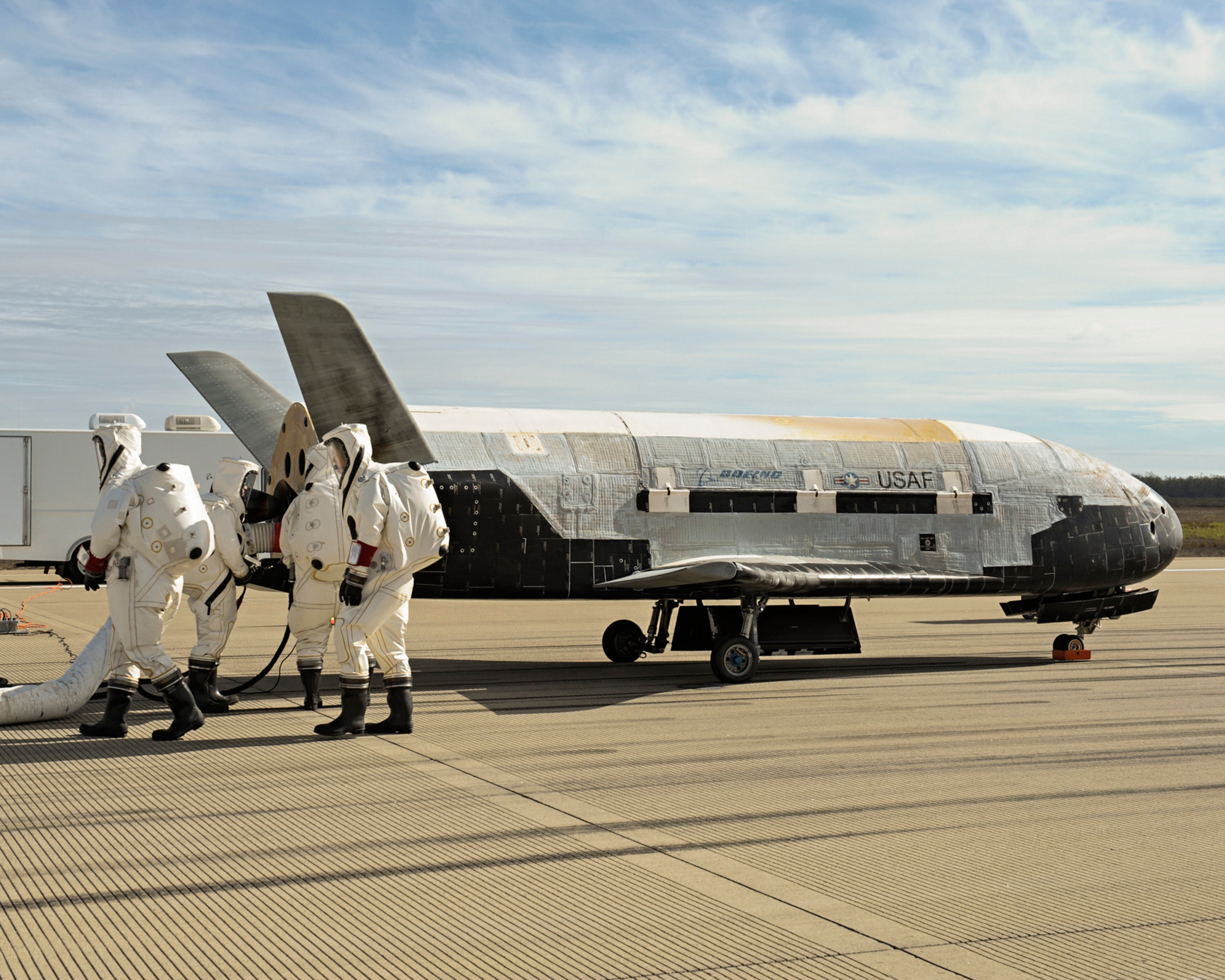The area around Disney World in Central Florida was rocked by a sonic boom on Sunday as a secret space shuttle mission landed at Cape Canaveral after spending the past two years in space.
The sonic boom set off a ton of social media activity as residents raced to ask what had just occurred in the area.
The U.S. Air Force confirmed that its X-37B unmanned mini space shuttle landed at KSC after spending 718 days in orbit. The spacecraft lifted off from Cape Canaveral Air Force Station atop a United Launch Alliance Atlas V rocket on May 20, 2015.
What it has been doing circling the planet all this time is the secret part that military officials won’t discuss, though many experts believe it has intelligence-gathering equipment. What the military did confirm in a news release is that mini shuttle is “an experimental test program to demonstrate technologies for a reliable, reusable, unmanned space test platform for the U.S. Air Force.”
This was fourth space trip for the 29-foot-long, 11,000-pound mini shuttle, but it was the first time it has landed in Florida — which is why Sunday’s sonic boom provided an unexpected wake-up call.
X-37B’s booming return was unexpected. While there were rumors in February that the mini shuttle might return to Florida after its three previous flights ended at Vandenberg Air Force Base in California, officials would not confirm any itinerary for the spacecraft.
Sunday morning’s homecoming was announced by the Air Force at 7:57 a.m. in a tweet: “The Air Force #X37B #OTV4 has returned from orbit and landed safely at @NASAKennedy.” Video and photos of the craft’s landing were later released.
NASA and the Air Force had been landing the X-37B in California, but with another scheduled mini-shuttle launch for later this year, the public may once again get another look at the weird smaller version of the shuttle.
The military has a plenty of options for an unmanned piece of equipment such as the X-37B, and if it indeed is an intelligence gathering platform, it will up the ante in the Space Race again.
To read the Orlando Sentinel entire article click here:
Photo courtesy of NASA
